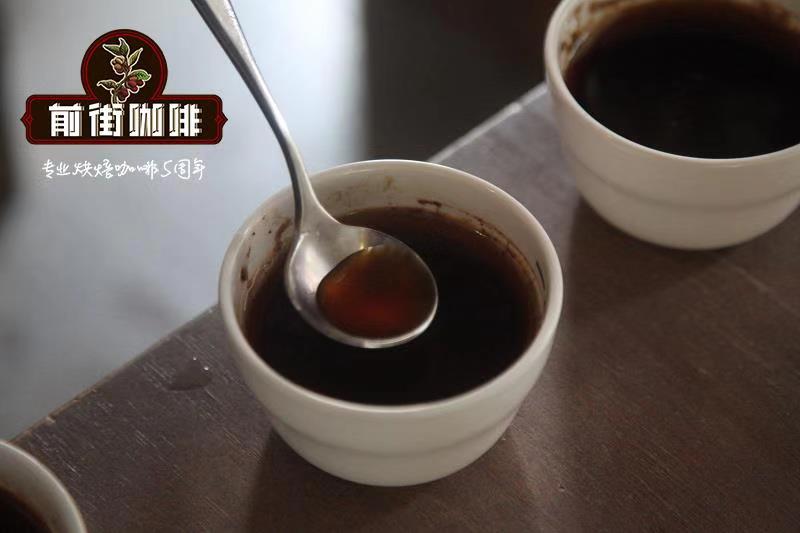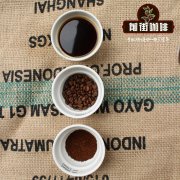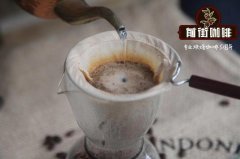Introduction to the characteristics of Baoshan in Yunnan small-grain Coffee producing area

Professional coffee knowledge exchange more coffee bean information please follow the coffee workshop (Wechat official account cafe_style)
A brief introduction to the Flavor of Yunnan Huaguoshan Coffee producing area in Qianjie
Yunnan coffee production accounts for 1% of the global coffee. Yunnan small grain coffee was introduced by missionaries a hundred years ago. at present, Yunnan small grain coffee is produced in 71 countries in the world, of which 5% is of good quality. Yunnan Baoshan small grain coffee is planted between 1000 and 1500 meters above sea level, and the climatic conditions are very good. It belongs to one of the top 5% coffee in the world, and the western countries with the largest consumption of coffee do not produce coffee. Starbucks and Nestl é coffee is produced in Yunnan, using ordinary coffee beans, Yunnan coffee quality is one of the best coffee varieties in the world.
Baoshan coffee generally refers to the coffee produced in Baoshan City, but it is mainly concentrated in the Nujiang River Valley of Lujiang Dam in Longyang District, the south bank of Yannu River, and Liuku Town in Nujiangzhou to the north. It is located between longitude 98 °25 "100 °02 'east and latitude 24 °08" 25 °51' north, along the south bank of the Nujiang River and backed by Gaoligong Mountain. The climate not only has the subtropical monsoon climate, but also belongs to the dry-hot valley climate, and the terrain undulation is relatively large, from the elevation of 400m Bazi to the alpine zone of 3000 meters above sea level, the three-dimensional climate is more obvious. The dry and wet season is more obvious, rainy in summer and dry in winter. By 2015, Baoshan Coffee has 180000 mu, with an output of 28000 tons.
Producing area: Baoshan producing area, Yunnan, China
Altitude: 1200 m
Treatment: washing treatment
Variety: iron pickup
Baking degree: shallow and medium baking
350ML Smart Cup (1-2 people)
Parameters: 15g coffee powder / 1:15/BG-5R/90 ℃
Technique: directly inject water to 228 grams, start the clock for 4 minutes; time to start to add coffee; the whole finish is 454 "."
The overall taste is full and balanced, with herbal flavor, nut, cream, cocoa, orange, smoked, brown sugar, American ginseng flavor, with a hint of black tea.
END
Important Notice :
前街咖啡 FrontStreet Coffee has moved to new addredd:
FrontStreet Coffee Address: 315,Donghua East Road,GuangZhou
Tel:020 38364473
- Prev

Introduction to the method of washing Yejafei Fruit Ding Coffee
Professional coffee knowledge exchange more coffee bean information please follow the coffee workshop (Wechat official account cafe_style) the front street wash Yega Sheffield Tintin Coffee Flavor introduction Guotintin Cooperative, located in the Waka producing area at the southeast end of Yega Sheffield, it was originally part of the Waka Cooperative of YCFCU of the Yega Sheffield Alliance. But later, with the traceability of raw coffee beans,
- Next

Brief introduction to the advantages of washing coffee beans with water introduction to the taste of El Salvador coffee beans
Professional coffee knowledge exchange more coffee bean information please follow the coffee workshop (Wechat official account cafe_style) front street Salvadoran olive manor coffee brief introduction coffee cherries picked from the trees are not the same degree of maturity, workers pour coffee fruit into a large pool, immature coffee fruit will float on the water because of low density, while mature coffee fruit sinks to the bottom
Related
- Beginners will see the "Coffee pull flower" guide!
- What is the difference between ice blog purified milk and ordinary milk coffee?
- Why is the Philippines the largest producer of crops in Liberia?
- For coffee extraction, should the fine powder be retained?
- How does extracted espresso fill pressed powder? How much strength does it take to press the powder?
- How to make jasmine cold extract coffee? Is the jasmine + latte good?
- Will this little toy really make the coffee taste better? How does Lily Drip affect coffee extraction?
- Will the action of slapping the filter cup also affect coffee extraction?
- What's the difference between powder-to-water ratio and powder-to-liquid ratio?
- What is the Ethiopian local species? What does it have to do with Heirloom native species?

